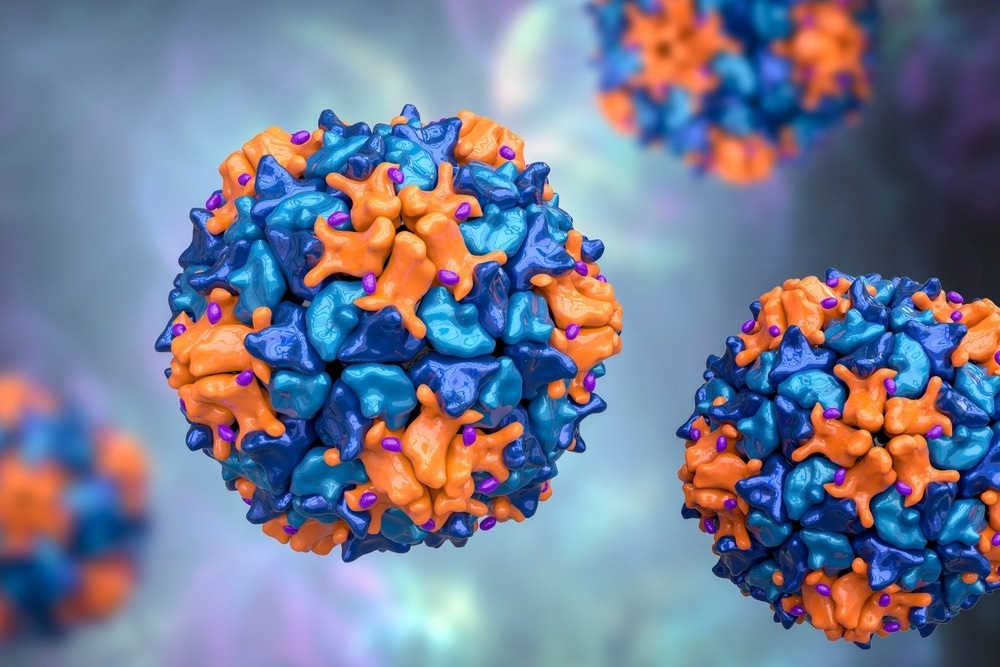Less than a month after a polio case was diagnosed in New York for the first time in almost a decade, researchers in New York detected the presence of the poliovirus in wastewater samples.

Image Credit: Kateryna Kon / Shutterstock.com
Polio case identified in New York
On July 21, 2022, a resident of Rockland County, New York, tested positive for the poliovirus, which was the first time in almost ten years that the virus had been detected in the United States. Although public health officials are still not certain of where the individual had contracted the disease, they believe that the infected individual had previously interacted with someone who had received the oral polio vaccine. Importantly, this individual did not have any prior history of travel outside of the United States during the transmission window.
An unvaccinated person who is exposed to the poliovirus, even in a weakened form, can still become infected. Since up to 95% of individuals infected with poliovirus will remain asymptomatic, it has been challenging to identify potentially infected individuals.
Polio detected in New York wastewater
Recently, the New York State Department of Health (NYSDOH) and the New York City Department of Health and Mental Hygiene (NYCDOHMH) published their findings confirming the presence of poliovirus in two sewage samples collected in June, as well as four collected in July in New York City.
Although the virus was previously detected in wastewater samples from Rockland and Orange Counties in New York, this was the first time that its presence was confirmed in New York City wastewater. Importantly, all 20 wastewater samples from Rockland and Orange Counties that were positive for the poliovirus were genetically similar to the strain that was diagnosed in the aforementioned Rockland County resident.
This report indicates that several hundreds of people are likely to be infected with the poliovirus in these areas. This estimate is based on how many people would need to be infected with the poliovirus for there to be a single case of paralytic polio identified in Rockland County.
An overview of polio
Poliovirus is a nonenveloped, positive-sense, and single-stranded ribonucleic acid (RNA) virus that is a member of the Enterovirus genus within the Picornaviridae family. The most common route of exposure to the poliovirus is through the mouth, typically from hands that have been contaminated with the fecal matter of an infected person; however, respiratory and oral-to-oral transmission is also possible.
Following infection with the highly contagious poliovirus, the initial symptoms can resemble those commonly observed with the flu. These may include fatigue, fever, headache, congestion, muscle pain, and vomiting.
Although these symptoms will typically resolve within 30 days, rare severe forms of the disease can lead to paralysis and/or death. Importantly, an infected individual can continue to spread the virus to others during this symptomatic period.
Polio vaccination
The oral polio vaccine, which contains a weakened version of the live virus, has not been administered in the United States since 2000. Nevertheless, this version of the vaccine is safe and administered in many countries throughout the world.
In New York City, about 86% of individuals aged five and older are completely vaccinated against polio, with most adults having been immunized as children. The current polio vaccination schedule recommended by the United States Centers for Disease Control and Prevention (CDC) includes a total of four polio vaccine doses that are administered at two months old, four months old, between six and 18 months old, and between four and six years of age.
Notably, individuals who have received at least three doses of the current vaccine exhibit at least 99% protection against severe disease.
Conclusions
Despite the several decades of research supporting the safety and efficacy of current poliovirus vaccines, many vaccine-hesitant parents have declined to immunize their children or practice a “delayed vaccine schedule.” Thus, these children, as well as individuals who remain unvaccinated as adults, are at significant risk of infection, particularly if the virus remains in circulation.
The New York City Health Commissioner Dr. Ashwin Vasan emphasized the importance of vaccination, particularly in light of the probable local circulation of this virus.
The risk to New Yorkers is real but the defense is so simple – get vaccinated against polio.”